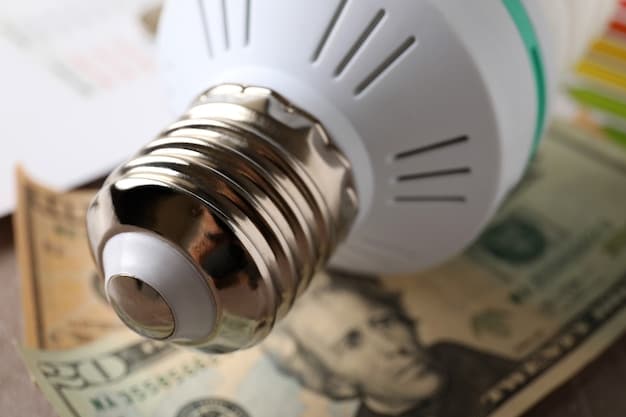LIHEAP: Apply Now for Winter Heating Assistance in the US

The Low Income Home Energy Assistance Program (LIHEAP) provides financial assistance to eligible low-income households in the US to help with their winter heating bills, preventing energy disconnection and ensuring a safe and healthy home environment.
Winter can be a challenging time for low-income households struggling to afford heating costs. The Low Income Home Energy Assistance Program (LIHEAP) is a federally funded program that helps these families stay safe and warm by providing financial assistance with their energy bills. Understanding LIHEAP, its eligibility requirements, and how to apply can be crucial for those in need.
Understanding the Low Income Home Energy Assistance Program (LIHEAP)
The Low Income Home Energy Assistance Program (LIHEAP) is designed to assist eligible low-income households with their home energy bills. Established to mitigate the burden of high energy costs, particularly during the winter months, LIHEAP provides crucial financial aid to ensure families can maintain a safe and healthy living environment. This program is essential for preventing energy disconnections and ensuring vulnerable populations have access to heat.
LIHEAP operates through grants to states, tribes, and territories, which then administer the program at the local level. This decentralized approach allows for flexibility in tailoring the program to meet the specific needs of each region, taking into account varying climates, energy costs, and eligibility criteria. Understanding how LIHEAP functions can help those in need access the assistance they require to manage their energy expenses.
Key Objectives of LIHEAP
LIHEAP focuses on several key objectives to support low-income households. These objectives include helping families pay their home energy bills, preventing energy shutoffs, and assisting with energy-related minor home repairs. By addressing these specific needs, LIHEAP aims to provide comprehensive support to vulnerable populations.
- Helping eligible households pay their heating and cooling bills.
- Preventing the disconnection of energy services during the winter.
- Assisting with weatherization and energy-related home repairs to improve energy efficiency.
- Providing crisis assistance for energy emergencies.
LIHEAP not only provides immediate financial relief but also focuses on long-term energy affordability through weatherization and energy efficiency measures. This holistic approach aims to reduce energy consumption and lower energy bills for participating households, fostering greater energy independence.
In conclusion, LIHEAP plays a vital role in safeguarding the well-being of low-income families across the United States by providing financial assistance, preventing energy disconnections, and promoting energy efficiency. Understanding the program’s objectives and functions is essential for those seeking assistance and for policymakers aiming to address energy poverty.

Who is Eligible for LIHEAP?
Determining eligibility for the Low Income Home Energy Assistance Program (LIHEAP) is crucial for those seeking assistance. LIHEAP eligibility requirements are primarily based on household income, but can also include factors such as household size, energy costs, and the availability of resources. Each state sets its own income thresholds, but they generally align with federal poverty guidelines.
Understanding these eligibility criteria is the first step toward accessing LIHEAP benefits and ensuring that assistance reaches those who need it most. By reviewing the specific requirements for your state, you can determine whether you qualify for LIHEAP support.
Income Requirements
Income is a primary factor in determining LIHEAP eligibility. Most states set their income limits at or below 150% of the federal poverty level. However, some states may have higher income thresholds, particularly in areas with higher living costs. It’s important to check the specific income guidelines for your state to understand your eligibility.
- Income limits are based on gross household income.
- States may also consider household size when determining eligibility.
- Some states offer additional consideration for households with elderly or disabled members.
Meeting the income requirements is essential, but it’s also important to gather the necessary documentation to verify your income. This typically includes pay stubs, tax returns, and other proof of income sources. Having these documents ready can streamline the application process and ensure timely assistance.
Other Eligibility Factors
In addition to income, other factors can influence LIHEAP eligibility. These may include household size, energy costs, and the availability of other resources. Some states may also prioritize certain vulnerable populations, such as the elderly, disabled, or families with young children.
- Household size is considered to account for varying energy needs.
- High energy costs in certain regions may influence eligibility criteria.
- States may prioritize households with elderly or disabled individuals.
States often have specific guidelines for addressing these additional factors. For instance, a household with a larger family may be eligible for higher LIHEAP benefits to account for increased energy consumption. Similarly, households in regions with extreme climates or high energy prices may receive additional assistance.
In conclusion, determining LIHEAP eligibility involves a review of both income and other relevant factors such as household size and energy costs. By understanding these requirements and gathering the necessary documentation, eligible households can access the financial assistance needed to manage their energy expenses during the winter months.
How to Apply for LIHEAP
Applying for the Low Income Home Energy Assistance Program (LIHEAP) involves several steps to ensure your application is complete and accurate. Understanding the application process, the required documents, and where to submit your application can make the process smoother and more efficient. This section outlines the key aspects of applying for LIHEAP.
The first step is to gather all necessary documents, which typically include proof of income, identification, and energy bills. You’ll also need to know where to submit your application, which can vary depending on your state and local area. By following these steps, you can increase your chances of receiving LIHEAP assistance and ensuring your home stays warm during the winter months.
Gathering Necessary Documents
Before you begin the LIHEAP application process, it’s essential to gather all the required documents. These documents are used to verify your eligibility and ensure that you receive the correct amount of assistance. Having these documents ready will save you time and make the application process easier.
- Proof of Income: Pay stubs, tax returns, Social Security statements, or other documents verifying income.
- Identification: Driver’s license, state ID, or other government-issued identification.
- Energy Bills: Recent energy bills showing your account information and energy usage.
In addition to these core documents, you may also need to provide proof of residency, such as a lease agreement or utility bill in your name. If you are applying on behalf of someone else, you may need to provide power of attorney or other legal documentation. Check with your local LIHEAP office for a complete list of required documents.
Submitting Your Application
Once you have gathered all the necessary documents, the next step is to submit your LIHEAP application. The submission process can vary depending on your state and local area. Many states offer online application portals, while others require you to apply in person at a local office. Some states also allow you to submit your application by mail.
- Online Application: Check your state’s LIHEAP website for an online application portal.
- In-Person Application: Visit your local LIHEAP office to submit your application in person.
- Mail-In Application: Download the application form from your state’s website and mail it to the designated address.
When submitting your application, be sure to fill out all sections completely and accurately. Errors or omissions can delay the processing of your application. If you have any questions or need assistance with the application process, contact your local LIHEAP office for guidance.
In conclusion, applying for LIHEAP involves gathering the required documents and submitting your application through the appropriate channels. By following these steps and providing accurate information, you can increase your chances of receiving the assistance you need to manage your energy bills during the winter months.
Understanding LIHEAP Benefit Amounts
Understanding how LIHEAP benefits are calculated can help you anticipate the level of assistance you might receive. LIHEAP benefit amounts vary depending on several factors, including household income, energy costs, and the availability of funds. Each state determines its own benefit levels within federal guidelines, tailoring the program to local needs.
Understanding these factors can help you plan your budget and manage your energy expenses more effectively. By knowing what to expect, you can better prepare for the winter months and ensure your home stays warm and safe.
Factors Influencing Benefit Amounts
Several factors influence the amount of LIHEAP benefits a household may receive. These factors are designed to ensure that assistance is targeted to those with the greatest need. Understanding these factors can provide insight into how benefits are determined.
- Household Income: Lower-income households typically receive higher benefit amounts.
- Energy Costs: Areas with higher energy costs may offer larger benefits.
- Household Size: Larger households generally receive more assistance to account for higher energy consumption.
In addition to these factors, states may also consider the age and health of household members when determining benefit amounts. For example, households with elderly or disabled individuals may receive additional assistance due to their increased vulnerability to cold weather. States also take into account the availability of funds when setting benefit levels.

How Benefits are Distributed
LIHEAP benefits are typically distributed in one of two ways: direct payments to energy vendors or direct payments to households. In the case of direct payments to energy vendors, LIHEAP funds are credited directly to the household’s energy account, reducing their monthly bill. In the case of direct payments to households, the household receives a check or electronic funds transfer that they can use to pay their energy bills.
- Direct Payments to Vendors: LIHEAP funds are credited directly to the household’s energy account.
- Direct Payments to Households: The household receives a check or electronic funds transfer.
The method of distribution can vary depending on the state and the specific circumstances of the household. Some states may require direct payments to vendors to ensure that LIHEAP funds are used specifically for energy expenses. Other states may allow direct payments to households to provide greater flexibility in managing their finances.
In conclusion, LIHEAP benefit amounts are influenced by factors such as household income, energy costs, and household size. Benefits are typically distributed through direct payments to energy vendors or direct payments to households. Understanding these factors and distribution methods can help eligible households anticipate and manage their energy expenses during the winter months.
Navigating Potential Challenges
While LIHEAP is designed to provide significant assistance, applicants may encounter certain challenges during the application process. Understanding these potential hurdles and knowing how to address them can help ensure a smoother experience. This section outlines common challenges and offers strategies for overcoming them.
By being prepared for potential issues, such as incomplete applications or delays in processing, you can proactively address them and increase your chances of receiving timely assistance. This includes gathering all required documents, understanding eligibility criteria, and knowing how to follow up on your application.
Common Application Issues
Several common issues can arise during the LIHEAP application process, potentially delaying or hindering your ability to receive assistance. Being aware of these issues can help you avoid them and ensure your application is processed efficiently.
- Incomplete Applications: Missing information or required documents can delay processing.
- Eligibility Questions: Uncertainty about meeting income or other eligibility criteria.
- Delays in Processing: High demand for LIHEAP can lead to processing delays.
One of the most common issues is submitting an incomplete application. To avoid this, carefully review the application form and ensure that all sections are filled out accurately. Gather all required documents, such as proof of income, identification, and energy bills, before submitting your application. If you have any questions about the application process, contact your local LIHEAP office for assistance.
How to Overcome Challenges
If you encounter challenges during the LIHEAP application process, there are several steps you can take to overcome them. From addressing eligibility questions to following up on delayed applications, these strategies can help you navigate the process more effectively.
- Double-Check Your Application: Ensure all information is accurate and complete.
- Contact Your Local LIHEAP Office: Seek clarification on eligibility criteria or application requirements.
- Follow Up on Delayed Applications: Inquire about the status of your application and any potential issues.
If you are unsure whether you meet the eligibility criteria, contact your local LIHEAP office for clarification. They can provide guidance on income limits, household size requirements, and other factors that may affect your eligibility. If your application is delayed, follow up with the LIHEAP office to inquire about the status of your application and any potential issues that may be causing the delay.
In conclusion, while applying for LIHEAP can present certain challenges, being aware of common issues and knowing how to address them can help ensure a smoother process. By preparing a complete and accurate application, seeking clarification when needed, and following up on delayed applications, you can increase your chances of receiving the assistance you need to manage your energy expenses during the winter months.
Additional Resources and Support
Beyond LIHEAP, numerous other resources and support programs are available to help low-income households manage their energy costs and stay warm during the winter. Exploring these additional options can provide further assistance and ensure that vulnerable populations have access to the resources they need.
These resources range from state-funded energy assistance programs to non-profit organizations offering weatherization services. By leveraging these various forms of support, households can create a comprehensive plan to address their energy needs and improve their overall financial stability.
State and Local Energy Assistance Programs
Many states and local communities offer their own energy assistance programs in addition to LIHEAP. These programs can provide additional financial aid, weatherization services, and other forms of support to low-income households. Exploring these options can supplement LIHEAP benefits and ensure that families receive adequate assistance.
- State-Funded Programs: Check your state’s Department of Energy or Social Services website for information on state-funded energy assistance programs.
- Local Community Programs: Contact local community action agencies or non-profit organizations for information on local energy assistance programs.
State and local programs often have different eligibility criteria and benefit levels than LIHEAP. Some programs may offer assistance with specific types of energy expenses, such as heating oil or propane, while others may provide comprehensive energy assistance packages. It’s important to research the options available in your area to determine which programs best meet your needs.
Weatherization Assistance Programs
Weatherization assistance programs focus on improving the energy efficiency of homes, thereby reducing energy consumption and lowering energy bills. These programs typically offer services such as insulation, weather stripping, and window and door repairs. Weatherization can provide long-term savings and create a more comfortable living environment.
- LIHEAP Weatherization Assistance: LIHEAP funds can be used for weatherization services.
- Department of Energy Weatherization Assistance Program: Provides grants to states for weatherization projects.
Weatherization services can significantly reduce energy bills by sealing air leaks, improving insulation, and upgrading inefficient heating and cooling systems. This not only saves money but also reduces energy consumption and promotes environmental sustainability. Contact your local LIHEAP office or community action agency for information on weatherization assistance programs in your area.
In conclusion, in addition to LIHEAP, state and local energy assistance programs and weatherization assistance programs can provide further support to low-income households. By exploring these additional resources, families can create a comprehensive plan to manage their energy costs and stay warm during the winter months.
| Key Point | Brief Description |
|---|---|
| 💰 LIHEAP Overview | Federal program aiding low-income households with energy bills. |
| 📝 Eligibility | Based on income, household size, and energy costs. |
| ✍️ Application Process | Gather documents, apply online or in person, and follow up. |
| 💡 Additional Resources | State programs, weatherization assistance can further reduce energy costs. |
Frequently Asked Questions (FAQ)
▼
LIHEAP is a federally funded program that helps low-income households with their energy bills, preventing disconnections and ensuring a safe, warm home during winter and assistance with cooling during summer.
▼
Eligibility is primarily based on household income, but can also include factors like household size, energy costs, and the availability of resources. Income limits usually align with federal poverty guidelines.
▼
Gather necessary documents like proof of income, identification, and energy bills. Apply through your state’s LIHEAP website, in person at a local office, or by mail, depending on your state’s procedures.
▼
Benefit amounts vary based on household income, energy costs in your area, and household size. States set their own benefit levels within federal guidelines, tailoring the program to local needs.
▼
Ensure your application is complete and accurate. Contact your local LIHEAP office for clarification on eligibility or requirements. Follow up on delayed applications to inquire about their status and address any issues.
Conclusion
The Low Income Home Energy Assistance Program (LIHEAP) is a vital resource for low-income households in the US, providing critical financial support to manage energy bills and ensure safe and warm homes during the winter. By understanding LIHEAP’s eligibility requirements, application process, and benefit amounts, eligible households can access the assistance they need to navigate the challenges of high energy costs and maintain a comfortable living environment.





